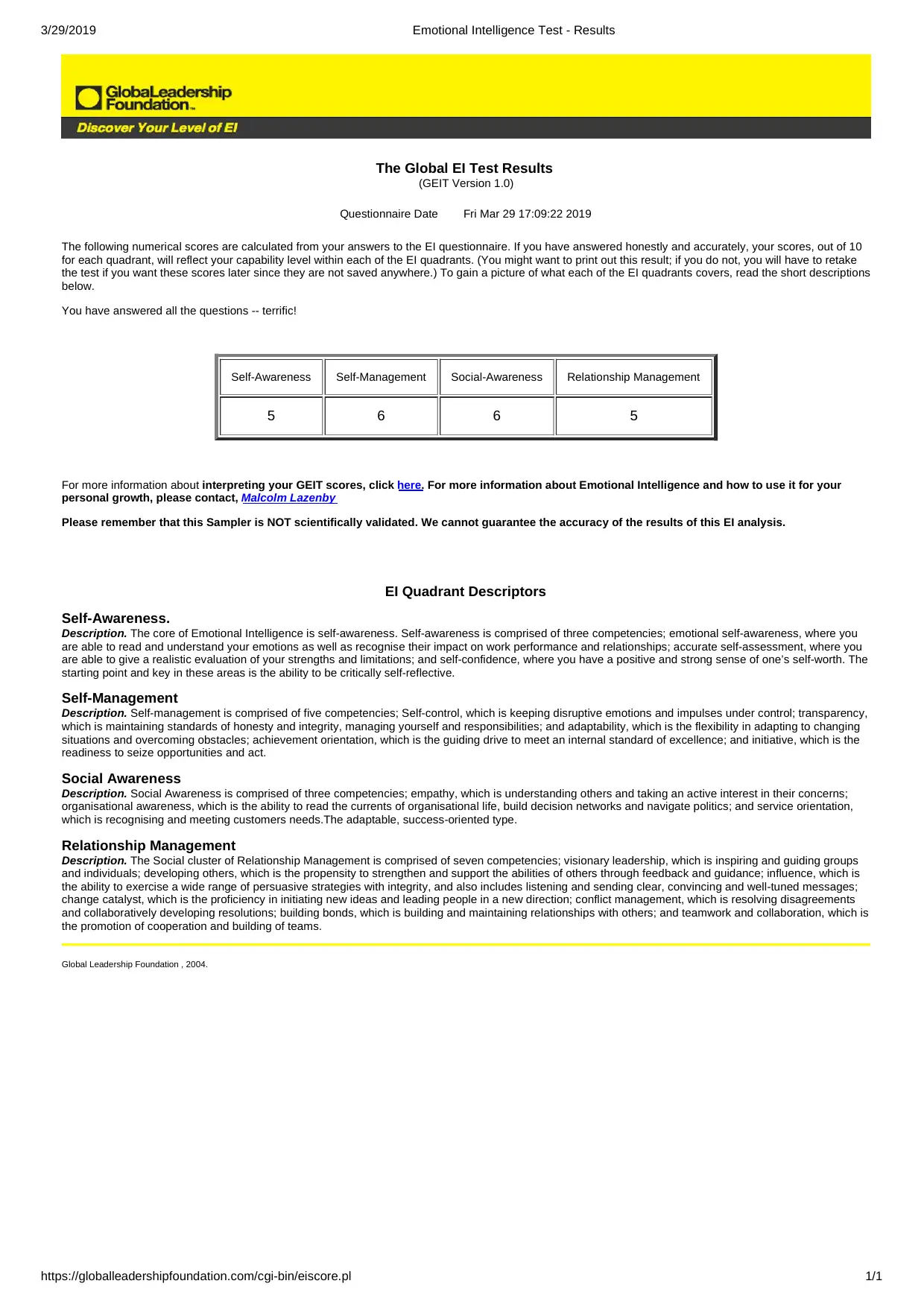MBA502 Assessment 1: EI Test Results, Johari Window, and Reflection
VerifiedAdded on 2023/01/18
|1
|589
|85
Report
AI Summary
This report presents the results of an Emotional Intelligence (EI) assessment, including scores from the Global EI Test (GEIT) and Daniel Goleman’s EQ Instrument. The assignment requires self-assessment and evaluations from two peers. The student utilizes the Johari Window model to analyze the results and reflect on their self-awareness, self-management, social awareness, and relationship management capabilities. The report also includes a reflective essay demonstrating an understanding of the core competencies of EI. This assessment is for the MBA502 course and aims to enhance the student's understanding of emotional intelligence and its application in leadership and personal development. The student has completed the tests, gathered feedback, and analyzed the results, providing a comprehensive overview of their EI profile.







![[object Object]](/_next/static/media/star-bottom.7253800d.svg)